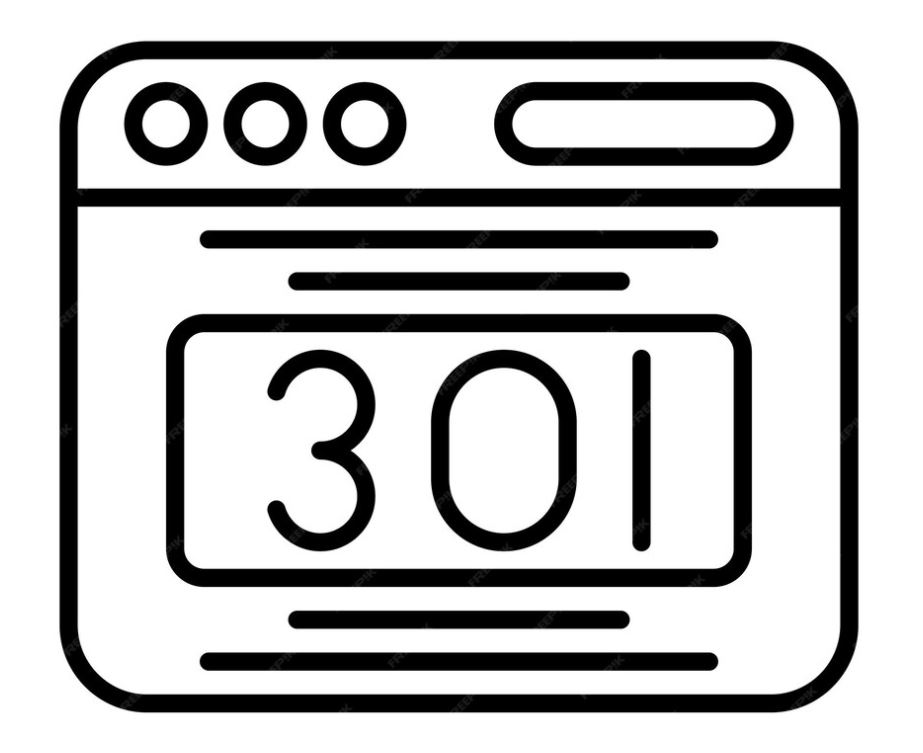
What is Anchor Text?
Anchor text is the clickable text displayed within a website that links one website to another.
Anchor text, within the world of SEO, helps search engines understand the context and relevance of a backlink.
Benefits of anchor text in the world of SEO
Using anchor text within a web page that is descriptive and appropriate to the content that is being linked, according to the text or environment in which it is located, can improve its classification within search engines such as Google or Bing, generating more qualified traffic towards your site.
Descriptive anchor text consistent with the content inspires confidence in the user who is viewing your site.
A user who continues reading your text or content within your website, interacts and clicks on your links safely has the consequence that they are on a safe website, and this is reflected in their positioning in search engines.
How to create anchor texts for backlinks correctly
Relevance and context
Make sure the anchor text is relevant to the content of the page it links to.
Include keywords related to the topic of the linked page to improve relevance.
Naturalness and diversity
Avoid excessive use of exact keywords in anchor text as this can look unnatural and be viewed as spam by search engines.
Use a variety of anchor text that includes keywords descriptive phrases brand names and generic links.
Length and clarity
Keep anchor text concise and clear so users understand what the link is about before clicking on it.
Avoid long and confusing anchor text which can make the link difficult to understand.
Avoid generic anchor text
Avoid generic anchor texts such as “Click here” or “Learn more” as these do not provide relevant information about the linked content.
SEO optimization
Use keywords strategically in anchor text to improve SEO but without overdoing or forcing their inclusion.
Testing and monitoring
Test different types of anchor text and monitor backlink performance to adjust and improve your link building strategy.
Importance of Anchor Text
Anchor text is generally a precise description of the content being linked to, and this gives search engines clues about the topic of the content being discussed.
Below, we highlight the importance that anchor text can have when it comes to using it appropriately within a web page:
- Anchor text helps search engines understand the context and relevance of a backlink within the content or environment in which it is located on the website.
- Anchor text allows search engines to find out the content of the linked web page, and consequently, allows that web page to be indexed.
- Using descriptive anchor text that properly identifies the content being linked allows website owners to improve the credibility of their backlinks to users and search engines.
Importance of anchor text for outbound links
Clarity and context for search engines
Anchor text provides search engines with clear information about the content and relevance of the pages to which outbound links point.
Positioning signals
Relevant and descriptive anchor text sends signals to search engines about the keywords you want to rank for on each page.
Don't abuse keywords
Care should be taken not to overuse keywords in anchor text, as this can be seen as an attempt at manipulation by search engines.
Importance of backlinks for positioning in Google and Bing
Relevance and authority
Quality backlinks, with relevant anchor text, send signals to search engines about the relevance and authority of your website.
Positioning in search results
Quality backlinks can significantly improve the positioning of your pages in the search results of Google, Bing and other engines.
Traffic and visibility
Quality backlinks can also generate direct traffic to your website, thus increasing your visibility and online presence.
Importance of anchor text in the internal links of your own website
Clarity for search engines
Anchor text for internal links gives search engines greater clarity about the structure and organization of your website.
They help search engines better understand the content of each page on your website and what the relationship is like between them.
Context for content
Anchor text provides context about the content that internal links point to.
This helps users and search engines better understand the importance and subject of linked pages.
Positioning
The anchor text within the internal links sends signals to search engines about the keywords that you want to position on each page.
Using descriptive anchor text that perfectly defines the page you want to visit can help improve the positioning of the pages in search results.
Avoid over-optimization
Care must be taken not to over-optimize internal anchor text by using too many keywords. The use of keywords to describe an internal web page should be short and concise.
A highly optimized anchor text that has too many keywords and consequently is too long, can be seen as an attempt at manipulation and can lead to penalties from search engines.
How To use keywords effectively within anchor text
To use keywords effectively within anchor text, consider the following best practices:
- Variety of Keywords: Use variations of keywords and phrases related to the content rather than repeating the exact keyword in every anchor text.
- Brand + Keyword: Incorporate the brand name along with the keyword in the anchor text to enhance brand visibility and keyword relevance.
- Partial Match Anchor Text: Opt for anchor text with partial keyword presence to avoid over-optimization and maintain a natural link profile.
- Long-Tail Keywords: Include long-tail keywords in anchor text to target specific search queries and improve relevance.
- Avoid Generic Anchors: Steer clear of generic anchor text like "click here" as they provide little context to users and search engines.
- Contextual Relevance: Ensure that the anchor text aligns with the content and purpose of the linked page to enhance user experience and SEO.
- Internal Linking: Use keywords strategically in anchor text for internal links to guide search engines on the content relevance and improve site structure.
Types of Anchor Text
- Exact Match Anchor Text: Includes the exact keyword targeted for the linked page.
- Partial Match Anchor Text: Contains a variation of the keyword on the linked page.
- Branded Anchor Text: Uses a brand name in the anchor text.
- Generic Anchor Text: Uses generic keyword links like "Click here."
- Images as Anchor Text: Uses images with alt text as anchor text.
- Naked Link Anchor Text: Uses the URL as the anchor text.
- Targeted Anchor Text: Links with anchor text matching the targeted keyword.
- Backlink Anchor Text: Anchor text used by other websites linking to your site.
- One-Way Anchor Text Backlinks: Links from one site to another without reciprocal linking.
- Excessive Anchor Text: Overuse of anchor text on a page.
- Spammy Anchor Text: Irrelevant anchor text used for manipulative purposes.
How to add Anchor Text in HTML and WordPress
In HTML
- Create the anchor link using the
<a>tag with thehrefattribute set to[anchor_text], where[anchor_text]is the text you want to use as the anchor.
Example:<a href="https://www.name-of-web-page.com">Anchor Text</a> - Add the anchor by using the
idattribute on the HTML element you want to link to another part within your web page.
Example:<h2 id="my-anchor">Anchor Section</h2>
In WordPress:Using the Block Editor
- Place your cursor where you want to add the anchor link.
- In the Block settings, expand the "Advanced" section and enter the anchor text in the "HTML Anchor" field.
- Go to the text you want to link, select it, click the link button, and enter
[anchor_text]in the URL field.
Using the Theme File Editor (WordPress)
- In the text editor, create the anchor link using the HTML format:
<a href="https://www.name-of-web-page.com">Anchor Text</a>. - Locate the section you want to link to, switch to the text editor, and add the anchor by using the HTML format:
<h2 id="anchor_text">Header text number 2</h2>
<a href="#anchor_text">Link to Header text number 2</a>
Using a Plugin (WordPress)
- Install and activate a plugin like TinyMCE Advanced or WP Anchor Header.
- In the post editor, highlight the text you want to use as the anchor link.
- Click the "Anchor" button added by the plugin and enter the anchor text.
- The plugin will automatically add the anchor to the corresponding header or section.
How to Find and Fix Anchor Text Issues
To repair anchor text and internal links you can use the link analysis tool in Lookkle:
- Access the Link Analysis Tool:
- Go to your Lookkle and navigate to the link analysis tool section.
- Run a Comprehensive Analysis:
- Initiate a thorough analysis of your website's internal links and anchor text using the tool.
- Identify Anchor Text and Internal Link Issues:
- Review the analysis results to identify any problematic anchor text or internal linking issues that need attention.
- Edit Anchor Text:
- For anchor text that is generic, irrelevant, or over-optimized, edit the anchor text to make it more descriptive, natural, and relevant to the linked content.
- Optimize Internal Links:
- Ensure that internal links are strategically placed and use appropriate anchor text that aligns with the content of the linked pages.
- Update Anchor Text Strategy:
- Develop a comprehensive anchor text strategy that includes a variety of keywords, branded terms, and natural language to improve the overall quality of anchor text.
- Monitor and Maintain:
- Regularly monitor the performance of your anchor text and internal links using the Lookkle tool and make necessary adjustments to optimize your website's SEO.
Main benefits of using anchor text correctly on a website
Better positioning in search engines
Relevant and descriptive anchor text sends signals to search engines about the content and relevance of linked pages.
This can improve the ranking of these pages in search results.
Better user experience
Clear and contextual anchor text helps users better understand the content you are linking to.
This improves navigation and the overall user experience on the website.
Transfer of authority and relevance
Well-optimized anchor text can help transfer authority and relevance from one page to another through internal links.
This helps strengthen the SEO structure and architecture of the website.
Avoid penalties for over-optimization
Using different anchor texts and avoiding keyword abuse prevents search engines from interpreting the practices as an attempt at manipulation.
Better analysis and monitoring
Descriptive anchor text makes it easy to analyze and monitor internal and external links to identify and fix problems.
Google's advice for anchor text
- The anchor text should be descriptive and concise:
The anchor text should provide context to the user and help them understand where they will be redirected if they click the link.
The anchor text should give users a good idea of what to expect on the linked page. - Avoid overusing exact match keyword-rich anchors:
This may look spammy unnatural and may result in a penalty from Google. - Avoid generic anchors like “click here” or “read more”:
These provide no context or information about the link's destination. - Avoid Over-Networking:
Too many links leading to and from the same pages can appear suspicious to both users and search engines. - Format links so they are easy to recognize:
Make it easy for users to distinguish between regular text and link anchor text.
Avoid using CSS or text styles that make links look like regular text.
Tips on SEO and Online Business
Next Articles
Previous Articles















